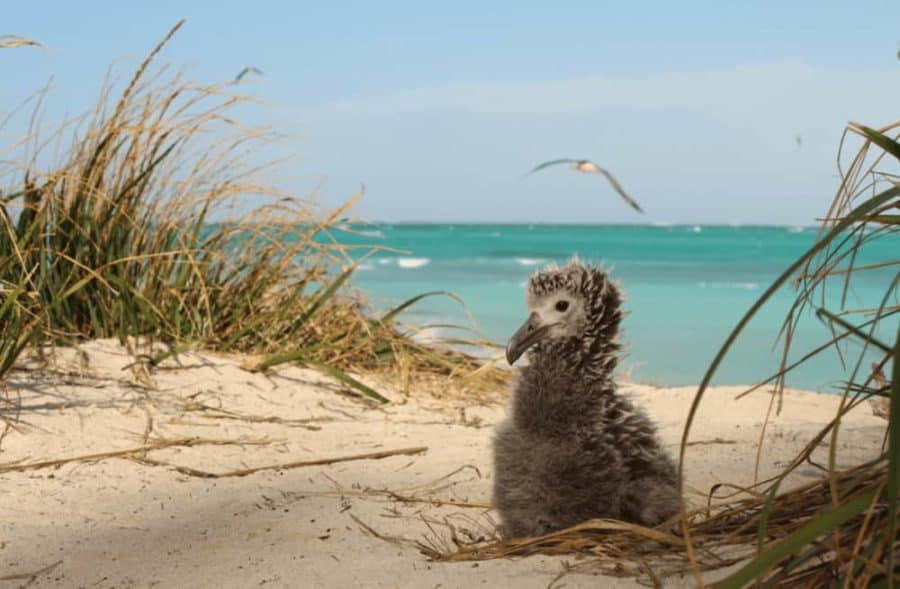In a study published Thursday, researchers evaluated the effects of sudden flooding from the Tohoku tsunami on more than 20 bird species nesting on the distant Pacific islands. The results shed light not only on how those birds weathered the dramatic rise in seas from the extreme event, but also how island wildlife may fare with the threat of rising sea levels and increased storm surges.
Many seabird species have disappeared from human populated higher islands, and their worldwide distributions are now concentrated on the low-lying islands protected as Wildlife Refuges and Marine National Monuments.
“Much of our Pacific island biodiversity is vulnerable to catastrophic flooding. Many of the bird’s eggs are in low-lying island baskets, so to speak,” said U.S. Geological Survey ecologist, Dr. Michelle Reynolds, lead researcher on the study. “The research here shows that sudden flooding from dramatic events like tsunamis as well as longer-term sea level rise create risks for the birds, but also reveal that there are opportunities to establish breeding colonies at higher elevations. Higher elevation habitat that is free of invasive predators may provide more resilience for island seabirds.”
“Estimates of nest flooding from the tsunami combined with models of sea-level rise flooding and storm wave flooding give us a tool to glimpse into future,” said John Klavitter, co-author of the study and manager with the U.S. Fish and Wildlife. “We can better understand where the populations are most vulnerable to flooding, what proportions of the seabird populations are most vulnerable, and where restoration and invasive predator management may achieve the most long-term value.”
At the far northwestern reaches of the Hawaiian Island chain, protected as part of the Papahanaumokuakea Marine National Monument, Laysan Island and the three islands of Midway Atoll have a combined area of about 2,300 acres and a mean elevation of less than 11.5 feet. These islands are used by 6 million to 10 million birds including the world’s largest colonies of Black-footed and Laysan albatrosses, and the global populations of endangered Laysan teal.
Catastrophic flooding of Pacific islands occurs periodically not only from tsunamis but also from storm surge and rainfall. With rising sea levels, the frequency of flooding events will likely increase. To understand where and which bird populations are most vulnerable to sudden flooding, the spatial extent of flooding from the 2011 Tohoku tsunami was detailed on the islands of Laysan and Midway Atoll. The spatial boundary of flooding on each island was then combined with bird nesting data. Species that nest near the coast, nest simultaneously, or have strong nest site and island fidelity are identified as more sensitive to population declines from island over-wash events.
The scientists estimated the 2011 tsunami flooded 26 to 52 percent of the Black-footed albatross nests concentrated on the coast of islands and that across the four islands more than 275,000 Black-footed and Laysan albatross and Bonin petrel nests were flooded. Populations of endemic land birds, such as the Laysan teal were especially vulnerable to the longer-term habitat changes from catastrophic flooding.
This study and recent research describing potential inundation from sea level rise and storm wave highlight the vulnerability of these low islands to wave over-wash and the opportunity restore species to the higher islands. The researchers hope the information can help natural resource managers make decisions about where restoration and conservation efforts can have the most long-lasting effects.
The study “Lessons from the Tohoku tsunami: a model for island avifauna conservation prioritization” was published in the journal Ecology and Evolution by USGS authors Michelle Reynolds and Karen Courtot, Paul Berkowitz of Hawaii Cooperative Study Unit at the University of Hawaii at Hilo, and John Klavitter of U.S. Fish and Wildlife Service.


